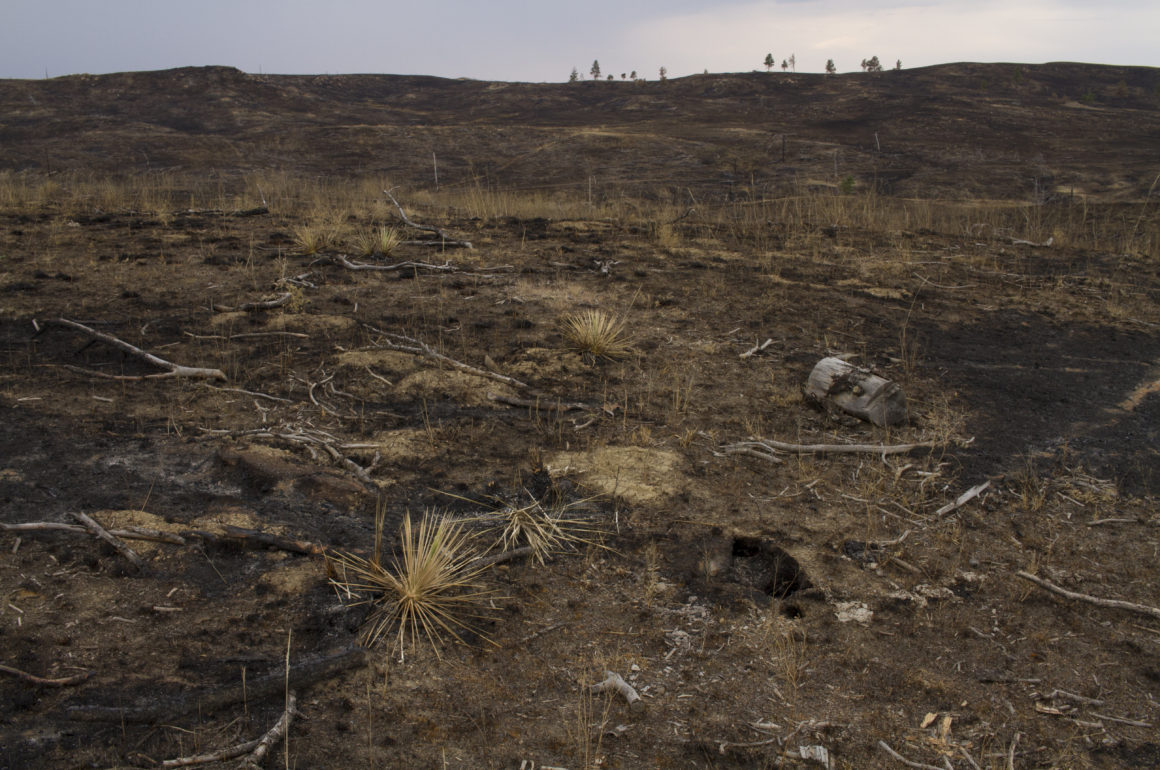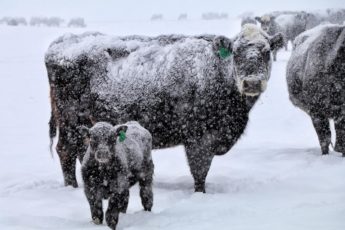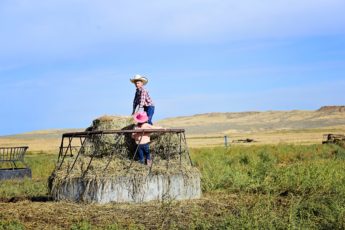
At Fort Keogh, Dr. Lance Vermeire Finds Certain Range Fires Spark New Growth
It’s been a long, harsh winter with record breaking snow, and now it’s a wet, late spring with terrible flooding. What’s next? A dry, hot summer with tons of fire?
How does that saying go again? When it rains, it pours. Unless it doesn’t, and then it burns.
There’s no doubt that Mother Nature can be destructive. But we all have to live with her here, so we’ve got to try to get along and make a living while doing it. Luckily, the folks at Fort Keogh — a 55,000-acre livestock and research lab near Miles City — are here to help.
Dr. Lance Vermeire, a range ecologist out of Fort Keogh, studies the impacts of fire on plants, soil, and insects. He travels around the state sharing his 15 years of research with landowners, ranchers, and land managers, and will gladly share his data with people who call or visit.
We at Prairie Populist have been lucky enough to see his presentations in both Miles City and Billings.
Dr. Vermeire’s presentation at the Montana Range Forum.
While talk of fire and drought always hits close to home for folks, there is some good news coming from Vermeire’s research. It turns out that a fire’s impact on the range may not be that bad.
“No single fire will destroy an ecosystem,” he said. “I haven’t seen any instance where a single fire impacted productivity.”
Of course, it’s great news that the plants will be okay, but what about people’s bottom lines?
Well, Vermeire’s presentation debunks the myth that you have to rest an area after a fire. Depending on the type of fire and when it happened, some of the best grazing may occur right after an area burns.
In general, our hearty native grasses respond positively to fire. These grasses are perfectly designed for this type of country because 80 percent of their biomass is below ground. Vermeire and his research team have observed an increase in buds within 24 hours after fire.
Luckily, some weeds don’t handle fire as well as our resilient native grasses. Annual weeds are more vulnerable. Cheatgrass, for example, probably won’t take over an area after a fire, unless there was a lot of litter cover on the land before.
Sprouting weeds are a bit tougher. While fire can destroy the seeds of leafy spurge, it could strengthen the weed’s stems and buds (as if we needed another reason to hate leafy spurge). The big question with weeds and fire, is whether or not they were there before the burn.
Fire can also help fight pests. A grass fire can kill the eggs of certain grasshoppers. And because many of our good insects can survive a burn, it can be a better alternative to some herbicides.
No one is arguing that fires aren’t hard on us. They’re not great for fencing, they’re terrible for our air quality, they mess with our production schedule, and they can be fatal to our livestock. But the good news is that in order for a fire to really devastate the long term, overall health of the range, which is so important to all of us, the fire would have to be really hot, burn for a long time, and burn frequently year after year. And that’s not naturally how fire on the range behaves.
An image of the Bliss Ranch after the devastating Lodgepole Complex Fires. Photo by August Schield
“At the time that the fire is occurring, it’s dangerous. It’s scary. It’s causing harm to those folks in that it’s unplanned,” said Vermeire. “The nice thing is that by the next growing season, there’s tremendous amount of benefit.”
Fire is complex, and it’s something we live with no matter where in our great big state we call home.
Luckily, we have researchers at Fort Keogh helping us figure out the best way to live and make a living alongside these fires.
-Amanda Garant
Got something to say to Prairie Populist? Send news tips, story ideas and comments to [email protected]. If you have something to submit, or an idea for a story you’d like to write for us, check out our Submission Guidelines here.
Feature Image by August Schield of the Lodgepole Complex Fire from the Summer of 2017.


